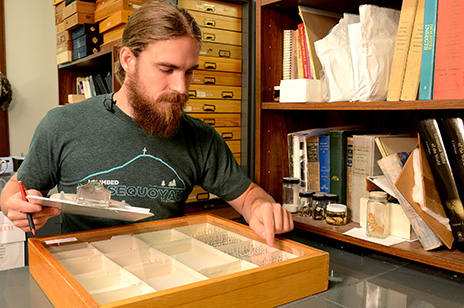
FAYETTEVILLE, Ark. — The third floor of the Agriculture Building on the University of Arkansas campus has a bug problem.
That is, it had a bug problem.
The Arthropod Museum, maintained by the University of Arkansas System Division of Agriculture, contains thousands of insect specimens — some 750,000 specimens, as it turns out. The problem was that, until this summer, no one knew for sure how many specimens were in the collection.
"We decided to hold a bioblitz to get an accurate count of what we had in the museum," said Robert Wiedenmann, head of the department of entomology.
A bioblitz, Wiedenmann said, is usually a concentrated survey of all species within a defined area, such as a park or nature preserve, conducted over a 24-hour period. The Arthropod Museum bioblitz was held over a four-day period with 26 faculty, staff and students from the entomology department, as well as a few interested individuals from outside the department.
The count took a total of 150 hours, Wiedenmann said. At the conclusion, the group had counted more than 400,000 pinned specimens, about half of which were identified to species, and more than 22,000 vials, each of which contained from one to many dozens of specimens.
Although the museum includes species found worldwide, Wiedenmann said most of the collection represents insects, spiders and other arthropods from Arkansas' interior highlands — the Ozark and Ouachita mountains.
The unique species found in the museum include a wood wasp that develops as larva in hardwood trees and is only seen in its adult form for 5 to 7 days a year. Another is a species of enamel green and blue small-headed fly, native only to the Ozarks highlands, that parasitizes tarantulas.
The Arthropod Museum is not what most people expect, Wiedenmann said. It's not a showy museum with big displays.
"This is a research museum," he said. "We use the collections to help identify insects submitted by Arkansas residents. Also, scientists worldwide use these specimens to help identify species they find in their field research."
Topics
Contacts
Fred Miller, Science Editor
Agricultural Communication Services
479-575-5647, fmiller@uark.edu